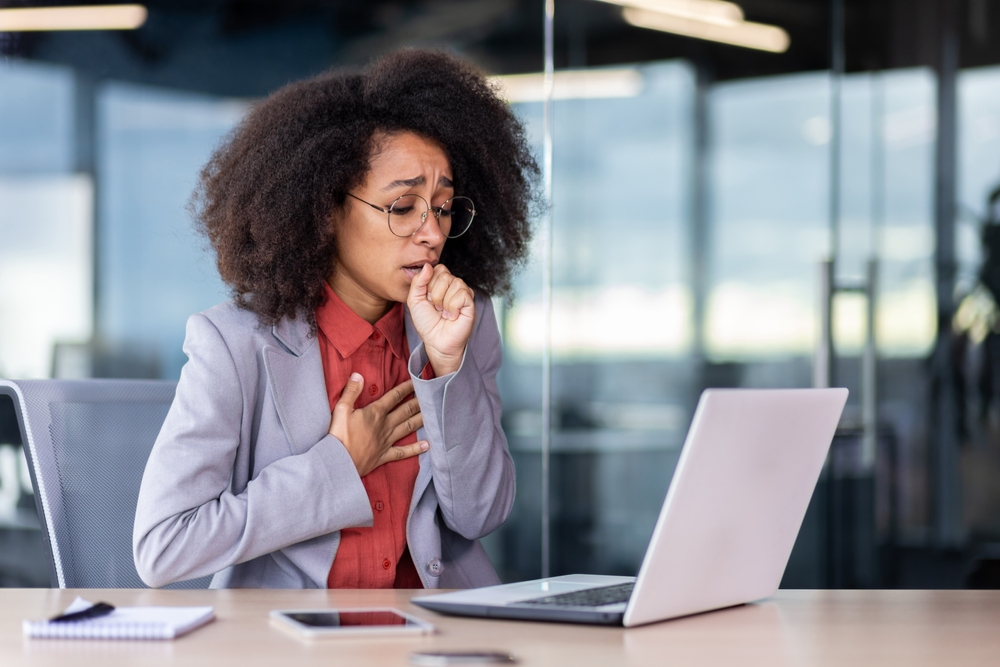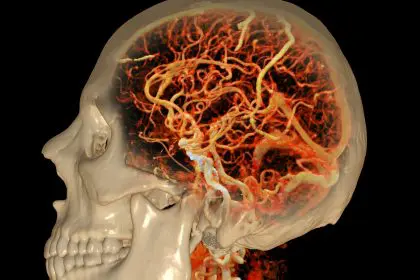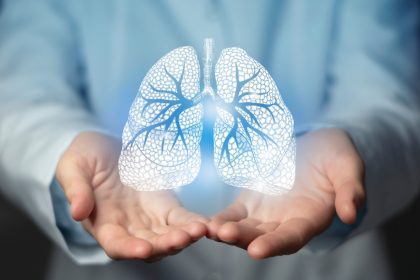Knowing the difference between a common cold and this serious lung infection could save your life
Why that lingering cough needs attention
When a persistent cough disrupts your sleep and drains your energy, it might be more than just a stubborn cold. Pneumonia, a serious lung infection, affects millions of Americans each year and can become life-threatening if left untreated. While many dismiss the early symptoms as a routine respiratory illness, recognizing the distinctive signs of pneumonia can lead to faster treatment and recovery.
The condition occurs when bacteria, viruses, or fungi invade the lungs, triggering an immune response that leads to inflammation and fluid buildup. This creates the perfect environment for a lingering infection that can quickly escalate from uncomfortable to dangerous, especially for those with compromised immune systems, the elderly, and young children.
The 6 telltale signs of a pneumonia cough
A pneumonia cough differs significantly from coughs associated with colds or allergies. Understanding these key characteristics can help you identify when a cough requires medical attention:
The depth and volume of a pneumonia cough often stands out immediately. These coughs tend to be louder and lower in tone compared to regular coughs, becoming particularly pronounced toward the end of each coughing episode. This distinctive sound results from inflammation deep in the lungs.
Unlike many dry, tickling coughs from colds, pneumonia typically produces phlegm that may appear yellow, green, or even contain traces of blood. This “productive” cough helps clear infected fluid from the lungs. Some cases may begin with a dry cough that later becomes wet as the infection progresses.
Many people with pneumonia report hearing crackling sounds in their lungs when breathing or coughing. Medical professionals call these sounds “rales,” and they occur due to fluid accumulation in the tiny air sacs called alveoli. These crackles often sound like rustling cellophane.
A high-pitched wheeze during breathing frequently accompanies pneumonia, indicating narrowed or constricted airways. This whistling sound occurs when air must force its way through passages narrowed by inflammation and mucus buildup.
The frequent, forceful coughing associated with pneumonia often leads to soreness in the chest wall or ribs. Additionally, the underlying lung inflammation can make taking deep breaths painful, causing sharp discomfort with each inhale.
Perhaps most tellingly, a pneumonia cough persists much longer than a typical cold. While most cold symptoms improve within a week, a pneumonia cough commonly lasts two weeks or longer, sometimes lingering for months even after other symptoms have resolved.
Why your body produces this distinctive cough
When pneumonia develops, your body intentionally increases mucus production to trap the invading pathogens. This protective mechanism leads to fluid buildup in the lungs, which must be cleared to allow proper oxygen exchange. The persistent cough serves as your body’s natural way to expel this excess fluid and improve breathing.
This explains why doctors sometimes caution against using cough suppressants during pneumonia recovery. The cough, while uncomfortable, performs a crucial function in healing. Suppressing it entirely may prolong the infection by allowing mucus and pathogens to remain in the lungs.
How doctors determine your treatment path
Effective treatment for pneumonia depends on identifying the specific cause of the infection. Doctors typically make this determination through a combination of physical examination, chest X-rays, blood tests, and sometimes sputum cultures.
Bacterial pneumonia requires antibiotics to eliminate the infection. Most patients notice significant improvement within three days of starting antibiotics, but completing the entire prescribed course remains crucial to prevent antibiotic resistance and recurrence. Skipping doses or stopping early may allow some bacteria to survive and potentially return stronger.
Viral pneumonia often doesn’t respond to antibiotics. In some cases, especially for influenza-related pneumonia, antiviral medications may help shorten the duration and severity of symptoms. However, treatment frequently focuses on managing symptoms while the body fights off the viral infection.
For the less common fungal pneumonia, doctors prescribe specialized antifungal medications. This type typically affects people with compromised immune systems or those exposed to specific environmental conditions. Treatment often continues longer than for other types of pneumonia.
The recovery strategies that speed healing
Beyond medical treatment, several at-home care approaches can significantly accelerate recovery from pneumonia:
Staying properly hydrated by drinking plenty of fluids helps thin mucus secretions, making them easier to cough up and clear from the lungs. Water, herbal tea, and clear broths work particularly well for maintaining hydration during recovery.
Rest ranks among the most important yet overlooked aspects of pneumonia recovery. Your body requires significant energy to fight the infection, repair damaged lung tissue, and clear built-up fluids. Rushing back to normal activities too quickly often leads to setbacks and prolonged illness.
Over-the-counter pain relievers like acetaminophen or ibuprofen can help manage the discomfort associated with coughing and chest pain, making it easier to rest and recover. However, always check with your healthcare provider about which medications are appropriate for your specific situation.
Taking warm baths or breathing in steamy shower air can temporarily open airways and loosen mucus, providing relief from congestion. Some people find that adding a few drops of eucalyptus or menthol oil to shower water enhances this effect.
Avoiding respiratory irritants like cigarette smoke, strong perfumes, and air pollution becomes particularly important during pneumonia recovery. These substances can further irritate inflamed lung tissue and trigger more severe coughing episodes.
When pneumonia becomes an emergency
While many pneumonia cases can be treated at home with appropriate medication and rest, certain warning signs indicate the need for immediate medical attention:
Difficulty breathing that worsens despite treatment requires emergency care, as it may signal that the infection is spreading or that complications are developing. Struggling to catch your breath, especially at rest, should never be ignored.
Persistent high fever (over 102°F) or fever that returns after initially improving may indicate that the current treatment isn’t working or that a secondary infection has developed.
Confusion, extreme fatigue, or an inability to stay awake can signal that oxygen levels have dropped dangerously low due to the pneumonia affecting gas exchange in the lungs.
Chest pain that becomes severe or different from the usual soreness associated with coughing might indicate complications like pleurisy (inflammation of the tissues surrounding the lungs) or, rarely, spread of infection to the heart.
Blue-tinged lips or fingernails represent a medical emergency, as this coloration (cyanosis) indicates severely reduced oxygen levels in the blood that require immediate intervention.
In severe cases, hospitalization becomes necessary to provide intravenous antibiotics, supplemental oxygen, or intensive monitoring. Individuals at higher risk, including those over 65, young children, and people with chronic conditions, often receive more aggressive treatment to prevent life-threatening complications.
The hidden dangers of untreated pneumonia
Pneumonia that goes untreated or isn’t properly managed can lead to serious complications that extend well beyond the initial infection. Understanding these risks highlights why prompt treatment remains so important:
A lung abscess occurs when pus collects in a cavity formed within the lung tissue. This painful condition often requires long-term antibiotic treatment and sometimes surgical drainage.
Respiratory failure develops when pneumonia becomes so severe that the lungs can no longer provide sufficient oxygen to the body or remove carbon dioxide effectively. This life-threatening condition typically requires intensive care treatment.
Sepsis, a potentially fatal systemic inflammatory response to infection, can occur when bacteria from pneumonia enter the bloodstream. This medical emergency causes rapid breathing, abnormal heart function, and potential organ failure.
Pleural effusion happens when fluid builds up in the space between the lungs and chest wall (pleural space). This painful condition restricts breathing and sometimes requires draining the fluid through a procedure called thoracentesis.
Pneumonia can sometimes lead to long-term lung damage, including scarring or reduced lung function. While most people recover completely, those with severe or recurrent pneumonia may experience lasting effects on their breathing capacity.
Protecting yourself from future pneumonia
Prevention strategies can significantly reduce your risk of developing pneumonia, especially if you fall into a high-risk category:
Vaccination provides one of the most effective defenses against pneumonia. The pneumococcal vaccine protects against the most common bacterial cause, while annual flu shots reduce the risk of influenza-related pneumonia.
Practicing good hygiene, particularly frequent handwashing and avoiding close contact with sick individuals, helps prevent the spread of respiratory infections that can lead to pneumonia.
Maintaining overall health through regular exercise, adequate sleep, and a nutritious diet strengthens your immune system, making it more capable of fighting off potential infections before they take hold.
For those with chronic conditions like asthma, diabetes, or heart disease, carefully managing these underlying health issues reduces pneumonia risk and potential complications.
Avoiding tobacco smoke, which damages the lungs’ natural defense mechanisms, significantly decreases pneumonia susceptibility. This includes both direct smoking and exposure to secondhand smoke.
Pneumonia remains a serious health concern, but understanding its distinctive symptoms, particularly its characteristic cough, allows for earlier intervention and better outcomes. By recognizing the warning signs and seeking appropriate treatment, you can navigate this potentially dangerous infection safely and return to full health more quickly.















